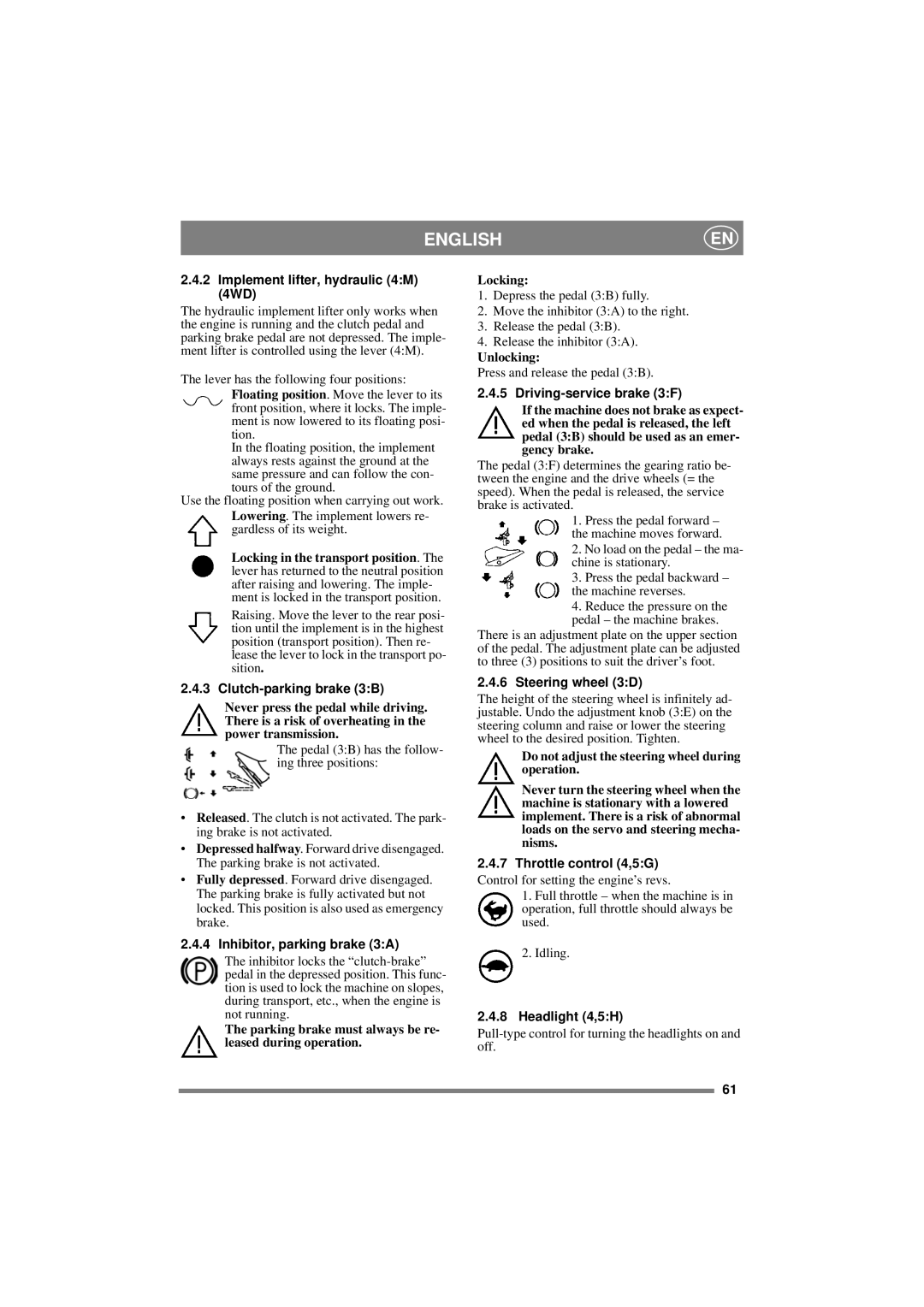DIESEL 4WD specifications
The Stiga DIESEL 4WD is a robust and versatile garden tractor designed to tackle a variety of outdoor tasks with ease. Powered by a high-performance diesel engine, this model stands out for its fuel efficiency and reliability, making it an ideal choice for both residential and commercial applications. One of the key characteristics of the Stiga DIESEL 4WD is its four-wheel-drive system, which provides enhanced traction and stability on challenging terrains. This feature allows users to confidently navigate through rough landscapes, wet grounds, or hilly areas without compromising performance.Equipped with a powerful 4-stroke diesel engine, the Stiga DIESEL 4WD offers impressive torque and the capacity to handle demanding mowing tasks. With a displacement that efficiently manages fuel consumption while maximizing output, it ensures that users can operate for extended periods without frequent refueling. The engine's modern design also incorporates noise-reduction technology, making it quieter than many conventional models.
The cutting deck of the Stiga DIESEL 4WD is another highlight, featuring a wide and durable design that allows for efficient mowing of large areas. The adjustable cutting height offers precision control, enabling users to customize their mowing to suit the grass type and length. This flexibility ensures a clean and professional-looking finish every time.
Stiga's innovative technologies are evident in the ergonomically designed operator’s seat and controls, which provide comfort and ease of use during extended operations. The intuitive dashboard displays crucial information at a glance, including speed, engine status, and fuel levels, allowing the operator to focus on the task at hand without distraction.
Furthermore, the Stiga DIESEL 4WD includes essential features such as a hydrostatic transmission system for smooth speed control, ensuring an effortless driving experience. The heavy-duty chassis guarantees durability, contributing to the overall longevity of the machine.
The versatility of the Stiga DIESEL 4WD is further enhanced by its compatibility with various attachments, such as lawn sweepers, snow plows, and trailers, making it a multi-functional tool for year-round use.
In summary, the Stiga DIESEL 4WD combines powerful performance, advanced technology, and user-friendly design, making it a top choice for anyone seeking an efficient and reliable garden tractor. Whether for mowing, hauling, or clearing tasks, this model reliably meets the diverse needs of modern landscaping and garden maintenance.

